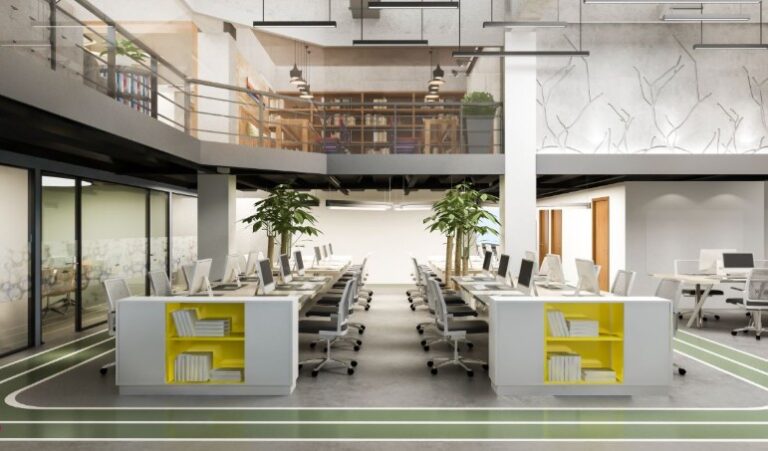
Warehouses are incredibly crucial in the modern age of supply chains and logistics to make companies competitive and efficient. With companies attempting to offer quicker and error-free service to expand markets, proper technology for warehouse management is extremely critical. Most companies begin with pre-configured warehouse management systems (WMS) because they are quick to implement. However, with these systems, businesses need to compromise when warehouses expand, need modification operations, or desire to be unique in a competitive market.
Due to these constraints, more companies are moving towards building custom warehouse management software. It sounds and looks like a simple decision, but it is not simply a matter of adding new capabilities; it is about creating a system that addresses unique requirements and unlocks the true potential in every warehouse operation.
Now it’s high time to understand why generic solutions fail and why a custom solution will make the operation more efficient. And how to build custom warehouse software that can help your company safeguard its supply chains for the future and build enduring value.
Top Reasons Why Off-the-Shelf Software Is Not Enough and You Should Switch to Custom Warehouse Software
Many companies move from off-the-shelf software to custom warehouse software. They want better control, faster changes, and tools that fit their work. In short, they want software that is made just for them, not general options. The following are the top reasons why you should also choose this path.
Limited Customization
Off-the-shelf solutions are attractive to most users since they have a wide range of features, some of which will not be compatible with how your business operates. In the event that your business deals with special picking procedures, industry rules, or customized reporting, not being able to customize the software becomes a limitation and makes work complicated. Over time, this rigid software can stifle creative ideas and cause delays. So it’s important to switch to custom warehouse software, which will help you avoid any feature limitations when you switch your business.
Integration Issues
Most contemporary warehouses are not stand-alone. Integrate your WMS with ERP, e-commerce, accounting, and transport management systems for real-time visibility and process automation. Off-the-shelf software usually involves complicated and expensive integration procedures, and is not necessarily compatible with fast-evolving tech stacks, resulting in double manual entries and delays. So, with the custom warehouse system, you can make this integration process easy and less expensive.
Problem of Excess Features
Most off-the-shelf WMS packages are filled with added features designed for many different types of customers. End-users must contend with unnecessary or confusing screens, which complicate their work and include extra training time. Rather than resolving problems, these features can slow down routine tasks and lead to errors. So that’s why it is the best idea to switch to a custom WHS that has only the features that you need without any extra confusion and cost.
Scaling and Adaptability Limitations
As your business grows to new places, add new products, or automate functions, your software needs to grow too. Off-the-shelf products can come with inflexible guidelines or exorbitant charges for more users, with limited ability to adapt to long-term expansion. So, if scalability and adaptability is your priority than you must choose custom warehouse software.
High Long-term Expenses and Dependence on Suppliers
Standard WMS may seem affordable at first, but costs rise over time due to fees, upgrades, and limited control. You depend on the vendor for updates and support, which may not match your goals. Custom warehouse management software avoids these issues, giving you full control and long-term value. A trusted custom software development company can build it to match your exact needs and within your budget, so no worry about exceed in budget or any other hidden costs.
Overlooked Competitive Opportunities
Now, to succeed in warehousing, you require new ideas, such as applying AI to optimize picking routes or enhance customer experience. That’s why it is good to choose custom WHS , so you can choose when and what new features to roll out using special software. This will help you transform your warehouse from a secondary supporting aspect to an asset.
These limitations, initially considered minor hassles, become insurmountable barriers as business complexity increases. That’s why switching to custom warehouse management software is increasingly seen as an investment in future agility and long-term success. If you still have some doubts and need security, then let’s discuss a real-time business example.
Real Example: How One Business Boosted Efficiency with Custom Warehouse Software
A home appliances distributor faced delays, system gaps with their ERP, and confusion from features they did not use. The company replaced its off-the-shelf WMS with custom warehouse software built to match its workflows.
- Picking errors dropped by 40% with a scanner-based interface.
- Order processing time reduced from 36 hours to 12 hours.
- The system is connected directly to ERP and shipping platforms without manual entry.
- Custom reports provided real-time insights into inventory and order status.
This move helped the warehouse team complete tasks faster, avoid errors, and handle higher demand without extra staff.
If you are also thinking of switching to custom warehouse software from off-the-shelf software but don’t know how to build one for your business, here is a very simple, step-by-step guide.
How to Create Custom Warehouse Software
The path to a custom warehouse system becomes easy when you follow a clear step-by-step plan. This plan helps turn each problem in your business into a working solution. Each step builds on the one before it, making sure the software matches how your warehouse works in real life. It connects your daily tasks with the right tools to make your work better and faster.
Discovery and Needs Analysis
Start by setting up cross-functional teams like operations, warehouse managers, IT, and supply chain partners to determine daily pain points and strategic objectives. Through interviews and workshops, capture a complete picture of what your existing WMS is not doing and what would deliver the greatest value if altered. This step will allow all subsequent decisions to be based on real business requirements, not theoretical possibilities.
Process Mapping and Improvement
After the pain areas are identified, analyze each process, such as receiving products, inventory management, picking, packaging, returns, etc. By visually mapping the steps and improving these processes, you ensure that the custom solution is best practices-based and free of unnecessary steps. It also serves as a system design reference so that problems caused by off-the-shelf “feature bloat” are not encountered.
Solution Design
UI/UX architects and engineers collaborate with your team to create system components that are equivalent to your workflow templates, such as barcode reading, data analysis, or automatic task assignment. They present wireframes and clickable prototypes early and refine them along the way, always keeping every user’s requirements in mind. They chart areas where the new system can be integrated with other technology, bridging the gaps that off-the-shelf software usually overlooks.
Select the Appropriate Technology Stack
Now that the architecture has been determined, you must choose the programming languages, frameworks, and hosting (cloud or on-prem) that best fit your organization, based on your strengths, security requirements, and growth plans. This mapping of current technology to future vision will enable you to still reap the benefits of innovations or integrations down the line.
Agile Development
The software is built in small parts. Developers write, check, and share each part step by step. This helps them get feedback early and make changes as needed. It keeps the work on track with your business goals and avoids extra effort. You can hire software developers to follow this method and build exactly what you need.
Integration and Data Migration
Integrate your new custom WMS with other technology solutions such as ERP, accounting, carriers, and e-commerce. Sync well and transfer data from current systems to maintain your business running and ensure data accuracy so you do not end up losing valuable information and productivity.
Testing and Quality Assurance
End-to-end testing encompasses everything from the final testing of the entire system by end users to the smallest component. Real-world testing and scheduled releases find problems or misaligned processes so the final system is stable, robust, and available for real-world use.
Training and User Adoption
Develop training materials for all groups of users, from front-line personnel to system administrators. Employ hands-on workshops, guides, and web-based training tools to establish skills and confidence. Active users facilitate quick adoption of the new system and maximize usage.
Deployment
Based on risk tolerance and business requirements, use a gradual or full rollout. Capture early feedback and modify settings as necessary to offer a smooth transition and minimal disruption to existing operations.
Maintenance and Continuous Upgrades
Once installed, watch the way the system operates closely, gather user feedback, and provide updates on a regular basis. This ongoing relationship enables your WMS to evolve to meet business objectives, rule changes, and new technologies.
All these processes fit well together, so the software not only works well but also becomes the way your company works, which assists with efficiency, growth, and fresh innovation.
Also Read: How to Improve Warehouse Operations Top Best Practices?
Conclusion
When you shift from off-the-shelf warehouse management software to tailored software, it is not just a technological move but a smart move, synchronizing technology with your business goals. Every step, from discovering your requirements to ongoing improvement, acts in harmony to tackle the individual needs of your warehouse. This thorough approach makes your solution capable of solving today’s challenges and growing to take advantage of opportunities tomorrow. By having a custom WMS, you get the strength to innovate fast, develop wisely, and create enduring skills that help you thrive in an evolving marketplace.








